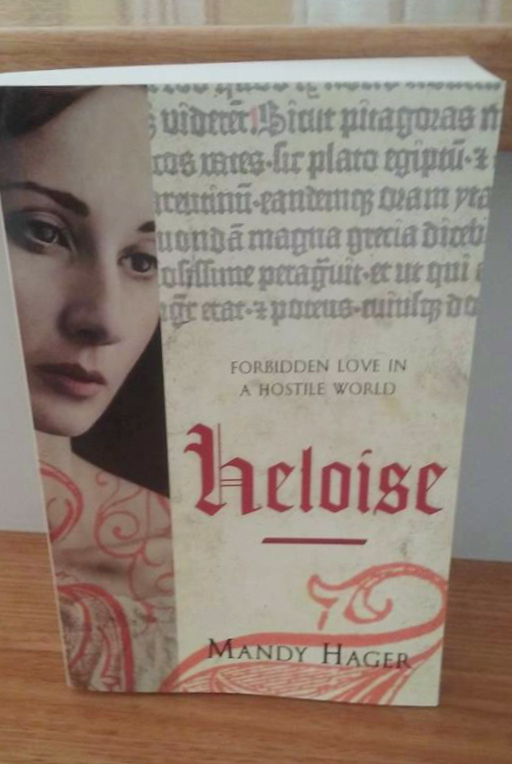 Mandy Hager has influenced a generation of readers with her politically astute, emotionally rich YA novels, including The Crossing and The Nature of Ash. But it’s her recent historical novel, Heloise, that’s been causing a stir this year. Described as “brilliant” by the Listener, Heloise tells the story of 12th century lovers Heloise d’Argenteuil and Peter Abelard, and the politics and attitudes they must negotiate during the Gregorian Reforms.
Mandy Hager has influenced a generation of readers with her politically astute, emotionally rich YA novels, including The Crossing and The Nature of Ash. But it’s her recent historical novel, Heloise, that’s been causing a stir this year. Described as “brilliant” by the Listener, Heloise tells the story of 12th century lovers Heloise d’Argenteuil and Peter Abelard, and the politics and attitudes they must negotiate during the Gregorian Reforms.
You’ve mentioned that you spent 18 months researching before starting to write Heloise. Were there any particular discoveries that stood out for you, or altered your approach?
Two things really impacted on how I ultimately told the story. The first was a very good piece of advice from academic Dr Constant Mews, who recommended I read as many of the texts Heloise would have read as possible, as all her writing is steeped in references to them. This really enriched the story, especially when I discovered her love of Ovid’s Heroides and saw how I could use it as a mirror for her own story. It was also a really good reminder that, though the incidentals of the 12th century are different, human emotion is consistent across time.
The second thing was discovering the politics that lay behind the story, which made the actions make sense and put them into context. This proved crucial to cracking open the various character’s motivations.
From early on, Heloise fights against the notion that as a woman, she must “learn in silence with all subjection.” How did this struggle, and its on-going relevance, influence your telling of the story?
For a start, the whole act of writing her story countered this: giving her back her voice and own personal agency. Thematically, it taps into several strands I wanted to focus on: the systematic silencing of women across the ages; the effects of church and state power and control, especially as it affected women; and on a craft level, the challenge of telling a story that still has pace and action when the central character is cloistered away and mainly interacts through letters and hearsay.
How difficult was it to capture the voice, thoughts and feelings of a character from the 12th century? Especially someone with Heloise’s background?
 As I mentioned above, by reading what Heloise read, it helped me find appropriate ways of expressing her feelings through the literature of her day. Plus, I had the advantage of her letters, which gave me an insight into how she put words on a page and thought. I wrote the whole first draft in a kind of heightened 17th century voice to try and get away from modern concepts, metaphors and language. It didn’t work from a readers point of view (too dense and saccharine) but it helped me make the shift in my head and meant that when I rewrote my head was much more seated in the language and thought constructions of the time. That said, it’s amazing how hard it is to pick up all the modern words and ideas – and I’m extremely grateful to the team of editors and readers for digging them out!
As I mentioned above, by reading what Heloise read, it helped me find appropriate ways of expressing her feelings through the literature of her day. Plus, I had the advantage of her letters, which gave me an insight into how she put words on a page and thought. I wrote the whole first draft in a kind of heightened 17th century voice to try and get away from modern concepts, metaphors and language. It didn’t work from a readers point of view (too dense and saccharine) but it helped me make the shift in my head and meant that when I rewrote my head was much more seated in the language and thought constructions of the time. That said, it’s amazing how hard it is to pick up all the modern words and ideas – and I’m extremely grateful to the team of editors and readers for digging them out!
In terms of feelings, once the situation is defined by its context, then it’s just a matter of imagining myself into the character’s head and focussing on what would be the most truthful human reaction to each situation. I think we make a mistake thinking people back then thought in a less emotionally sophisticated way. Heloise’s letters make it clear nothing changes in the history of the heart!
How did writing historical fiction compare with writing stories set in the near future, such as The Nature of Ash?
One’s solely based on imagining a future, with the ability to reference current culture as a kind of shorthand for what’s going on. Historical fiction requires a lot more digging around for shorthand references that are pertinent to the day but still resonate with today’s readers. Another less delicate way of putting this is, in books like The Nature of Ash (which I’m currently writing a sequel to) I’m free to make shit up! That’s a whole lot easier!
Does your approach to writing fiction such as Heloise differ to your approach to writing young adult fiction?
I think when writing young adult fiction there’s an overriding need for pace that is more pressing than adult fiction, along with the need for a young adult protagonist, but overall I don’t think there is that much difference. It’s still a matter of digging into character and trying to bring them alive on the page.
Has Heloise had an on-going influence on your own life, writing or politics?
Most undoubtedly all three! It’s by far the hardest book I’ve ever written (in terms of both its scope and the amount of time it took) and I had to dig really deep to keep going and not give up. I think the gift of the residencies I had during the time meant I felt a great deal of personal pressure to perform and come up with the goods, and though that was exhausting and at times overwhelming, I’m proud of myself for persevering! But I think it’s also taught me a lot as a writer, mainly thanks to my amazing editor, Harriet Allan, who really pushed me (in the best possible way) and I’m hoping that the lessons I’ve learned transfer through to all my writing in the future. The politics have had a huge impact. It’s depressing to realise the very same issues Heloise struggled with are still evident today, and we seem no closer to really solving them. We rabbit on a lot about how we should use history to learn how to progress and improve human lives, but the truth is we’ll go on making the same mistakes over and over – and the same people will continue to be oppressed – if we don’t actually heed the lessons and make a concerted effort to implement change. Heloise’s courage in speaking her truths and supporting those around her is one I now try even harder to emulate as a result of this.

